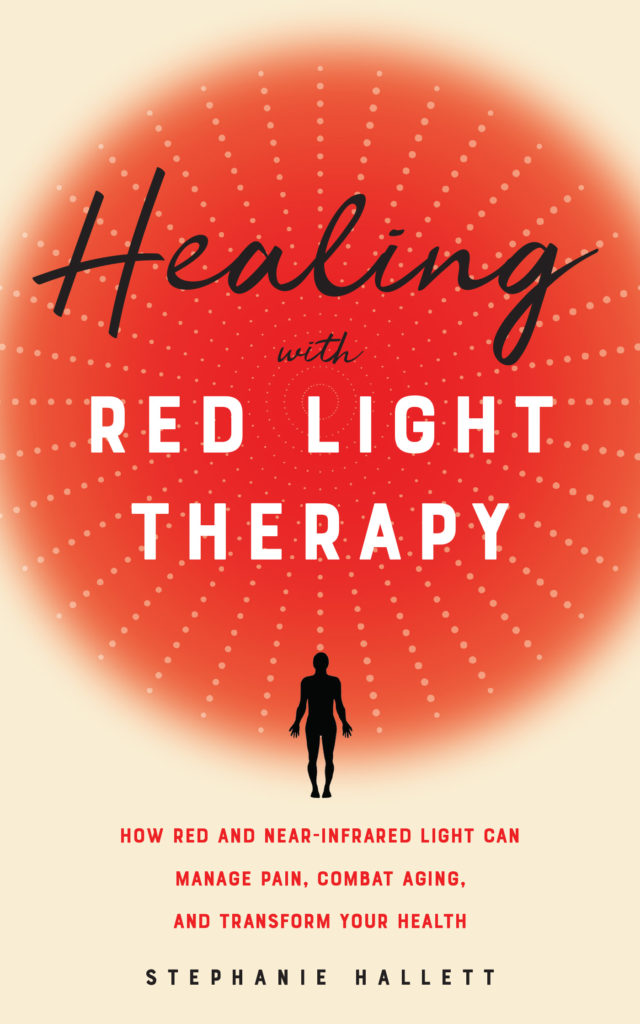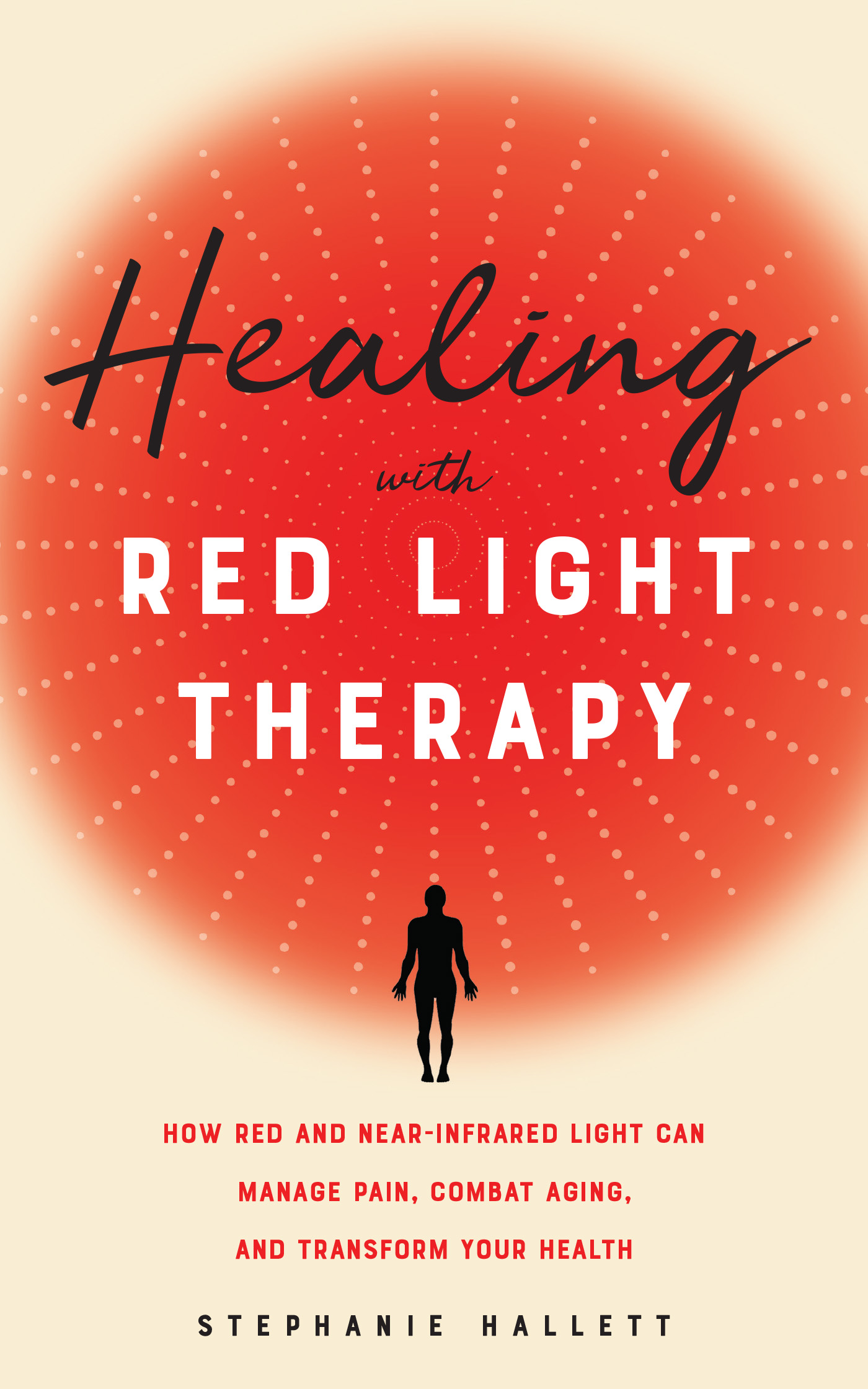
What is Red Light Therapy? Understanding the Painless Technique for Healing Your Body
- Book Sample /
- Health
- Mind, Body, Spirit
 In the 1990s, Red Light Therapy, or photobiomodulation (PBM), first appeared as a tool to help plants grow in space; scientists found that intense, low levels of red light would stimulate plant cells into photosynthesizing. Since then, red light therapy research has shifted to focus on what it can do for the human body, specifically if this process can increase the energy inside a person’s cells. Red light therapy today has transformed into a therapeutic technique that uses low-level red light or near-infrared light to help treat a wide range of health concerns, from basic skin care issues to chronic conditions like arthritis. Some of the most popular issues people treat with red light therapy include:
In the 1990s, Red Light Therapy, or photobiomodulation (PBM), first appeared as a tool to help plants grow in space; scientists found that intense, low levels of red light would stimulate plant cells into photosynthesizing. Since then, red light therapy research has shifted to focus on what it can do for the human body, specifically if this process can increase the energy inside a person’s cells. Red light therapy today has transformed into a therapeutic technique that uses low-level red light or near-infrared light to help treat a wide range of health concerns, from basic skin care issues to chronic conditions like arthritis. Some of the most popular issues people treat with red light therapy include:
- Acne
- Scarring
- Wrinkles
- Cold Sores
- Cuts and Scrapes
- Insomnia
- Hair Regrowth
- Sensitive Teeth
- Osteoarthritis
- Fibromyalgia
You can find red light therapy treatments in a variety of medical facilities, like your doctor’s office, chiropractor, or even your local salon and spa. While red light therapy is still being researched, evidence suggests this technique could be the medical breakthrough for simple, pain-free healing we’ve all been waiting for. At the very least, it’s important to understand red light therapy so you can check it out and see if it’s right for you and your body!
To help you navigate the world of red light therapy, author and journalist Stephanie Hallett wrote Healing with Red Light Therapy: How Red and Near-Infrared Light Can Manage Pain, Combat Aging and Transform Your Health, an easy-to-use guide that gives you everything you need to understand red light therapy and start your healing journey. This book will teach you tips and strategies for harnessing the all-encompassing healing benefits, as well as the best light source devices you can buy online.
Understanding the Science Behind Red Light Therapy
In the simplest terms, photobiomodulation in humans and other mammals is a lot like photosynthesis in plants: When red and near-infrared light hits our bodies, it penetrates our skin and tissues and is absorbed by light-sensitive molecules in our cells, producing a powerful cellular response. Aimed in the right place and for the right amount of time, red and near-infrared light has been shown to speed tissue repair, reduce inflammation and edema (the medical term for swelling), increase blood flow, and reduce pain; in short, it energizes our cells and helps them heal.
Now for a more complicated answer. First of all, scientists describe light color in nanometers (nm), and the light used in photobiomodulation is in the red to near-infrared range, which measures between about 600 and 1,100 nm. In general, wavelengths in the 600 to 700 nm (visible red) range are best for treating surface-level issues, such as wrinkles and scars, while light in the invisible near-infrared range, around 800 to 1,100 nm, penetrates more deeply to reach muscle, bone, and other tissues, though this isn’t always a rule.
These wavelengths are most effective for PBM because our tissues tend to absorb and scatter light of shorter and longer wavelengths (such as blue light), which means photons can’t penetrate deeply enough to affect our cells. There is also evidence to show that certain wavelengths of light, particularly near-infrared rays, penetrate dark skin more effectively than red wavelengths since melanin tends to absorb visible red photons, preventing penetration into the tissues.
Researchers have a few different ideas about what goes on inside the body when it’s bathed in red and near-infrared light. We know for sure that the light is absorbed by chromophores, or “photo acceptors,” the most likely being a molecule called “cytochrome c oxidase.” Dr. Hamblin explained that cytochrome c oxidase readily absorbs these wavelengths of light, which prompts a cascade of cellular effects. Here’s how James Carroll, CEO and founder of THOR Photomedicine, a PBM device company, explains what happens next:
Inside the body, our mitochondria—the powerhouse of our cells—combine the oxygen we breathe with the food we eat to create our cellular energy, adenosine triphosphate (ATP). But of course, things don’t always go according to plan, and sometimes we get stressed out, sick, injured, or just older—and so do our cells. When that happens, our mitochondria start to produce a substance called “nitric oxide,” which then binds to cytochrome c oxidase and prevents the mitochondria from consuming oxygen. In other words, nitric oxide clogs up our mitochondria. That blocks ATP production and also causes our bodies to produce an overabundance of free radicals, leading to oxidative stress—and oxidative stress can cause inflammation and cell death.
Some researchers believe that 80 percent or more of common ailments are caused by inflammation. When you shine red and near-infrared light on the body, though, it’s absorbed by cytochrome c oxidase and flushes nitric oxide out of the mitochondria. After that, ATP production goes up and oxidative stress goes down, and the flush of nitric oxide helps to increase blood flow.
How To Find the Best Red Light Devices
Most of us don’t dig up scientific papers when we’re buying an anti-aging moisturizer, and we probably wouldn’t do it for an at-home light device either. Here are some steps you can take instead:
1. Look for peer-reviewed research papers that actually use the device you’re interested in buying. No deep googling required here: If a company has conducted research with its devices, those studies will be easy to find on its website. The brand Vielight, for instance, which makes brain-targeted photobiomodulation devices, has a link on its home page to a list of clinical trials and studies conducted with its devices. Peer-reviewed papers with good results are a clear sign that your device will do what it claims.
2. Call some clinics that use PBM to treat the issue you’re dealing with. Do some online research to find physical therapists, sports medicine doctors, massage therapists, chiropractors, dermatologists, aestheticians, and other clinicians who use red and near-infrared light therapy in their practices to treat the issue you’re dealing with. Then, call or email their offices to ask for device recommendations. Even if that clinic is using a professional-grade device that’s not available on the consumer market, the clinician may be able to recommend a mass-market device that actually works. This isn’t necessarily a foolproof plan, of course, since not every office will be able or willing to help, but it’s a good starting point—professionals who work with this technology every day have seen what’s possible and can hopefully point you in the right direction.
3. Make sure the device is designed to do something specific. A device that claims to perform miracles—aka treat every condition under the sun—is probably not going to do much for you. Different wavelengths of light and different doses treat different issues, so if you want to get rid of wrinkles or fine lines, for instance, get a device that’s meant for skin care.
4. Look for FDA approval or clearance. This is important for safety. Not every PBM device has to go through its own FDA approval process if it’s substantially similar to a device that’s already been approved—that’s where the term “FDA cleared” comes in. But some sort of sign-off from the FDA at least indicates that the device has gone through a regulatory process and isn’t likely to cause harm.
5. If all else fails, read a ton of reviews. Online shoppers rely on reviews to buy everything, from toilet paper to pet food to beauty products to appliances. Other people’s opinions matter, and they can tell us a lot about a product we’re considering purchasing—and that goes for light therapy devices, too. If a light device has hundreds or thousands of positive reviews on a site like Amazon or Trustpilot, take a careful look at the reviews and use them to help you gauge the quality of the product you’re considering. Again, this certainly isn’t a foolproof plan—online reviewers are sometimes paid for their opinions, and influencers and bloggers often receive free products from device companies, which may color their reviews. But use your best judgment and see if other people’s experiences can help you make a smart choice. Just be sure your device has a decent return policy.
Order Healing with Red Light Therapy now to get the latest, science-based details on how you can take your health to the next level with the painless and simple treatment PBM offers, or follow Stephanie Hallett on Instagram for more tips.
Healing with Red Light Therapy
Discover the revolutionary power of low-level laser therapy (aka photobiomodulation) for the pain-free treatment of arthritis, psoriasis, hair loss, acne, cold sores, joint pain, scarring, and more. Red light therapy is dramatically changing the world of health care. Studies show using red and near-infrared light can have incredible
Learn more





